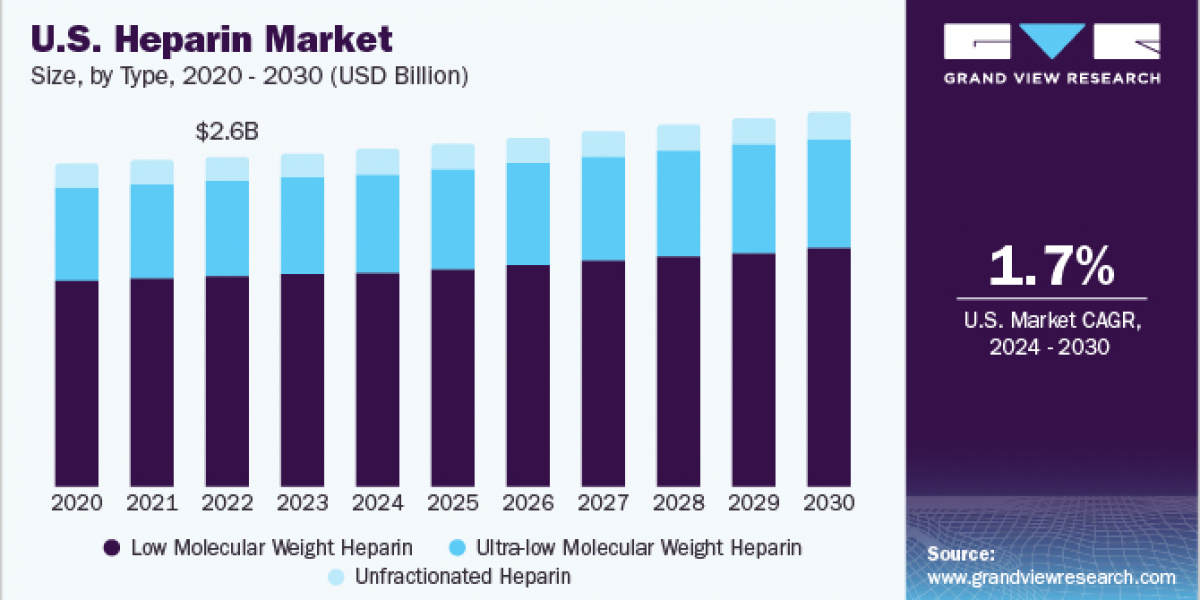The global heparin market was valued at approximately USD 7.56 billion in 2023 and is anticipated to experience a compound annual growth rate (CAGR) of 2.7% from 2024 to 2030. A significant driver of this market growth is the rising incidence of chronic diseases. According to a World Health Organization (WHO) report published in September 2023, noncommunicable diseases (NCDs), commonly referred to as chronic diseases, are responsible for around 41 million fatalities each year. Among these, cardiovascular diseases (CVDs) account for 17.9 million deaths, while cancer is linked to 9.3 million deaths. Additionally, chronic respiratory diseases contribute to 4.1 million deaths, and diabetes, including complications related to kidney disease, results in 2 million deaths. The increasing need for whole blood and blood component transfusions, a growing elderly population, and the high demand for plasma in the pharmaceutical sector are all expected to further propel the growth of the heparin market.
The surge in demand for whole blood and blood component transfusions is significantly enhancing the heparin market. Across many regions, the supply of blood is struggling to meet the demand. Efforts are being made globally to raise awareness about the critical importance of blood donation. An article from the National Center for Biotechnology Information (NCBI), published in October 2023, highlights that in the United States alone, someone requires blood every two seconds, and these transfusions play a vital role in saving lives. Despite 62 out of 171 countries implementing a 100% voluntary unpaid blood donation system, ensuring a sufficient and safe blood supply remains a considerable challenge. As these initiatives progress, the demand for heparin is projected to increase, supporting successful transfusions and ultimately contributing to the preservation of more lives.
Gather more insights about the market drivers, restrains and growth of the Heparin Market
Application Segmentation Insights
The Coronary Artery Disease (CAD) segment accounted for the largest revenue share of 23.4% in 2023. CAD is characterized by the narrowing of the coronary arteries, which results in diminished blood flow to the heart. An article from the National Center for Biotechnology Information (NCBI), published in August 2023, identifies CAD as the most prevalent form of heart disease, marked by atheromatous changes in the vessels that supply blood to the heart. This condition is a leading cause of mortality in the United States, highlighting the need for various interventions, including the use of heparin. Heparin plays a vital role in preventing blood clot formation and managing acute coronary events. The emphasis on initial risk factor assessment complements a holistic approach to managing CAD, in which heparin is an essential component.
The Atrial Fibrillation segment is projected to experience a significant compound annual growth rate (CAGR) from 2024 to 2030. Atrial fibrillation is a prevalent heart rhythm disorder that requires anticoagulant therapy to avert the formation of blood clots. According to the Centers for Disease Control and Prevention (CDC), it is estimated that by 2030, 12.1 million individuals in the U.S. will be diagnosed with atrial fibrillation, which is an underlying cause of death for approximately 26,535 people. Furthermore, research indicates that between 15% and 20% of stroke patients also experience arrhythmia, underscoring the necessity for blood thinners as a treatment option. Common symptoms of atrial fibrillation include fatigue, weakness, dizziness, shortness of breath, chest discomfort, palpitations, and lightheadedness. These factors are expected to significantly drive the demand for heparin in the coming years.
Order a free sample PDF of the Market Intelligence Study, published by Grand View Research.









